Chive blossom vinegar is a stunning and flavorful infusion crafted from fresh chive blossoms steeped in mild vinegar capable of adding a delicate onion-garlic touch to salad dressings, marinades, sauces, and more.
There's something magical about the fleeting beauty of chive blossoms.
These delicate purple flowers, with their subtle onion-garlic flavor, make a brief appearance each spring, gracing our gardens and kitchens with their vibrant presence. Capturing the essence of these edible blossoms in chive blossom vinegar is a special way to preserve their unique charm and savor their delightful taste long after their season has passed.
This homemade infused vinegar not only adds a pop of color to your kitchen creations but also brings a touch of nature's elegance to your recipes.
Let's celebrate the flavor and beauty of chive blossoms by transforming them into a vibrant, fragrant vinegar that can be enjoyed all year round.

As an Amazon Associate I earn from qualifying purchases.
Jump to:
What Are Chives?
Chives (Allium schoenoprasum) are a perennial herb that belongs to the Allium family, which also includes onions, garlic, leeks, and shallots. They have slender, hollow, green leaves that grow in mounding clumps, growing to around 12 inches in height.
Chives have a mild onion-garlic flavor and are often used as a garnish. They can be added to soups, salads, sauces, omelets, and more. Their delicate flavor shines through most when they are used fresh and tends to diminish when cooked for extended periods or dried.
Regular chives produce edible, purple blossoms during spring, while garlic chives produce white flowers and have a more pronounced garlicky taste.
The chives I started from seed in my food forests haven't reached maturity yet, and aren't flowering in the spring, but thankfully, my sister Kate has an established patch I was able to raid this year! Previously, I used my mom's chive patch!

Harvesting Chive Blossoms
Here's what to look for and how to harvest chive blossoms:
- Appearance: Look for chive blossoms that are vibrant purple, fully open, and free from browning or wilting. The best time to harvest them is when they are at their peak freshness, typically in late spring or early summer.
- Harvesting: To harvest chive blossoms, use clean scissors or garden shears to cut the flower stems about 2 inches from the base of the plant. Try to harvest them in the morning after the dew has dried, as this is when their flavor and aroma are most potent. Be sure not to remove all the blossoms from a single plant, as this may hinder its growth and remove valuable resources for our pollinators.
- Cleaning: Soak the chive blossoms in cool water, using your fingers to agitate and remove any dirt or insects before transferring to a clean bowl or kitchen towel.
- Storage: If you're not using the chive blossoms right away, store them in a sealed container lined with a paper towel in the refrigerator. They should stay fresh for a few days.
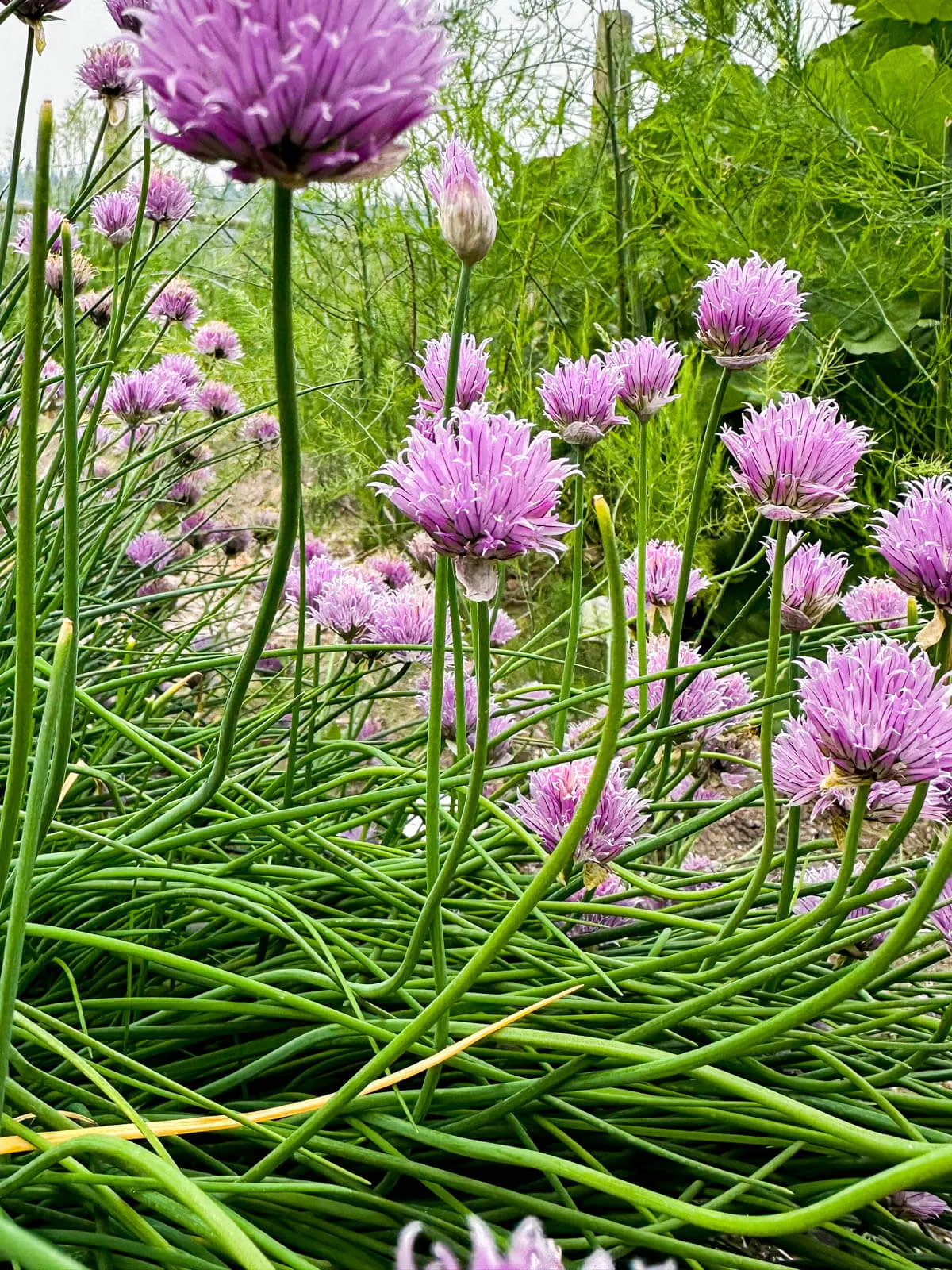
Tips + Tricks
No. 1 --> If you don't have chives in your garden, reach out to friends! These prolific perennials are common garden dwellers. Your mom, grandma, or best friend, someone is bound to have the chives you're looking for.
No. 2 --> Keeping your garden free of pesticides and chemicals makes for easier work cleaning these chive blossoms and removes the worry of chemical contamination in your end product.
No. 3 --> There are people who advocate for pouring heated vinegar over your chive blossoms and a shorter soak. I do not. This recipe is magical because of the vibrant color of the vinegar infusion at the end, using hot vinegar guarantees you'll end up with a duller color.
No. 4 --> This recipe recommends specific vinegars, but in a pinch, regular distilled white vinegar will work. It's got the cleanest, most neutral taste of all vinegars and has the best acidic tang.
No. 5 --> I remove the stems from the flowers by snipping directly below the blossom, if you like, you can always add the stems and even diced chive leaves to the infusion.

Key Ingredients
Chive Blossoms:
Harvest chive blossoms at their peak freshness, when they are vibrant purple and fully open. This will ensure the best flavor and color for your vinegar. If you have garlic chives, you can certainly use the flowers or a mix of both, but the color won't be as vibrant.
Vinegar:
Use mild-flavored vinegar that won't overpower the delicate taste of the chive blossoms. White wine vinegar, champagne vinegar, and rice vinegar are excellent clear choices for this purpose. They have a subtle flavor profile that complements the delicate onion-garlic notes of the chive blossoms, allowing the infused vinegar to showcase the unique flavor and vibrant color of the flowers.

How To Make Chive Blossom Vinegar
- Collect chive blossoms.
- Soak in a cold water bath, agitating with your fingers to remove dirt, debris, and any small insects. Remove from cold water bath and transfer to a bowl or clean kitchen towel.
- Remove stems and dried bud casings. Discard any obviously wilted, slimy, or otherwise gross flowers.
- Measure 1 1/2 cups of chive blossoms and transfer to a pint sized mason jar.
- Lightly crush the chive blossoms with a pestle or muddler to bruise the flowers and help them release their fragrance.
- Pour vinegar over the blossoms until the jar is full - between 1 - 1 1/2 cups will be required.
- Cover the jar with a non-reactive lid, I used a glass sealer, but a coated canning lid would work too.
- Set aside for 2-3 weeks, or until completely infused. The color of the vinegar will be a vibrant pink. Strain the vinegar through a fine mesh sieve and transfer to a clean mason jar for storage.
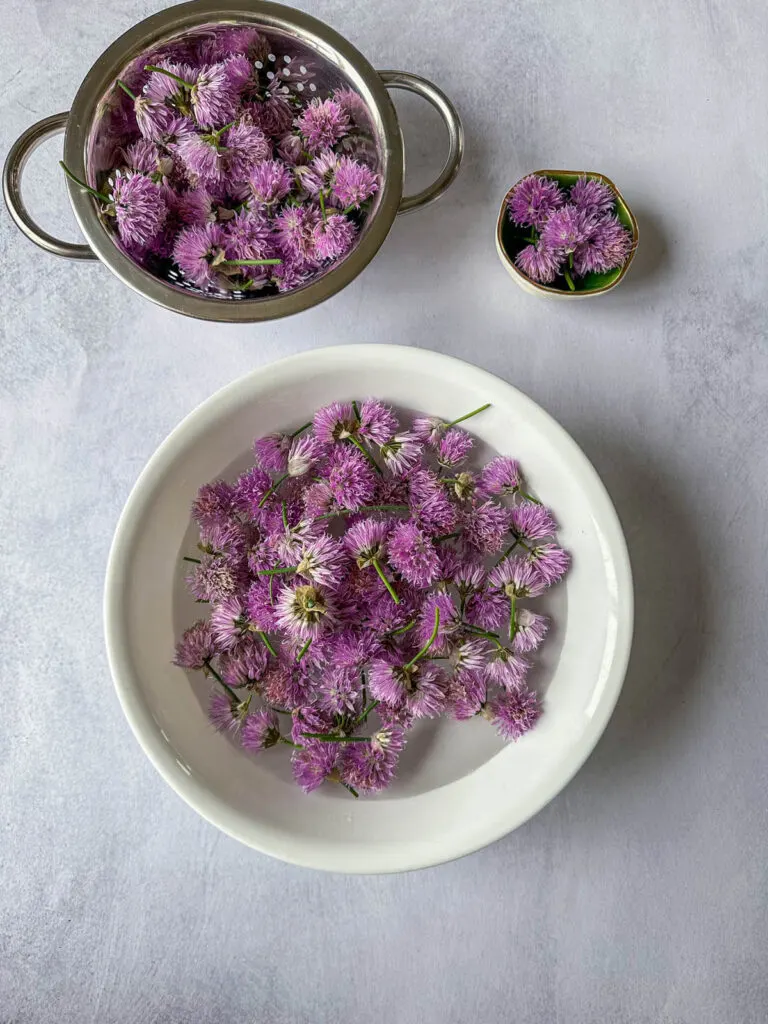

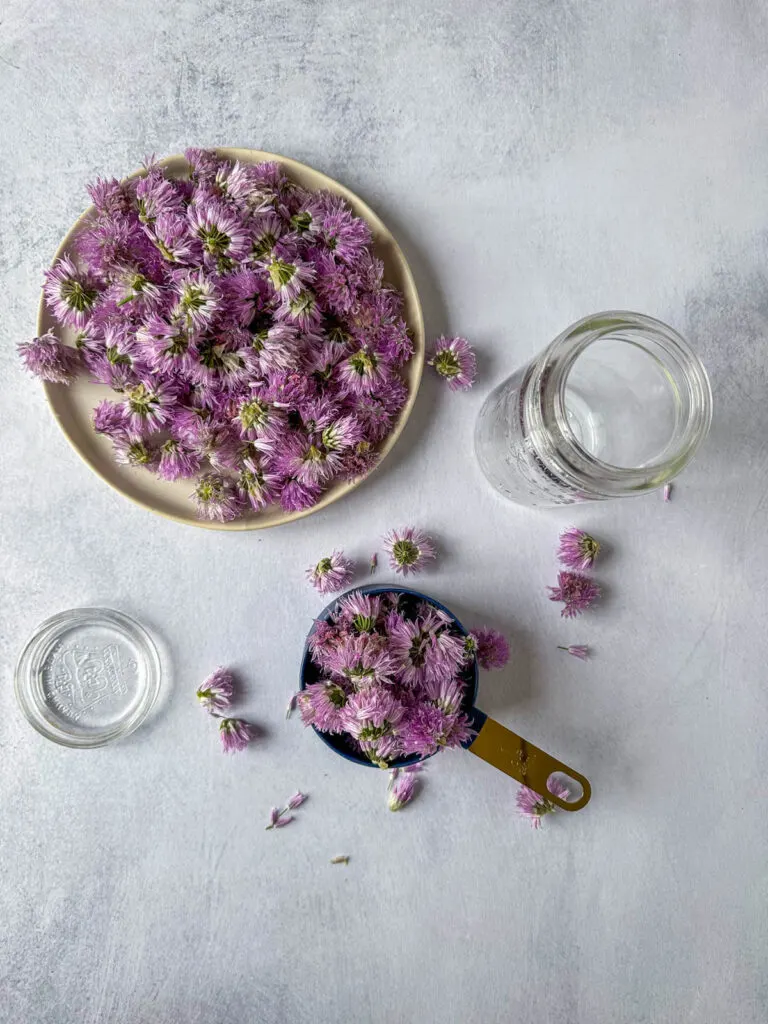
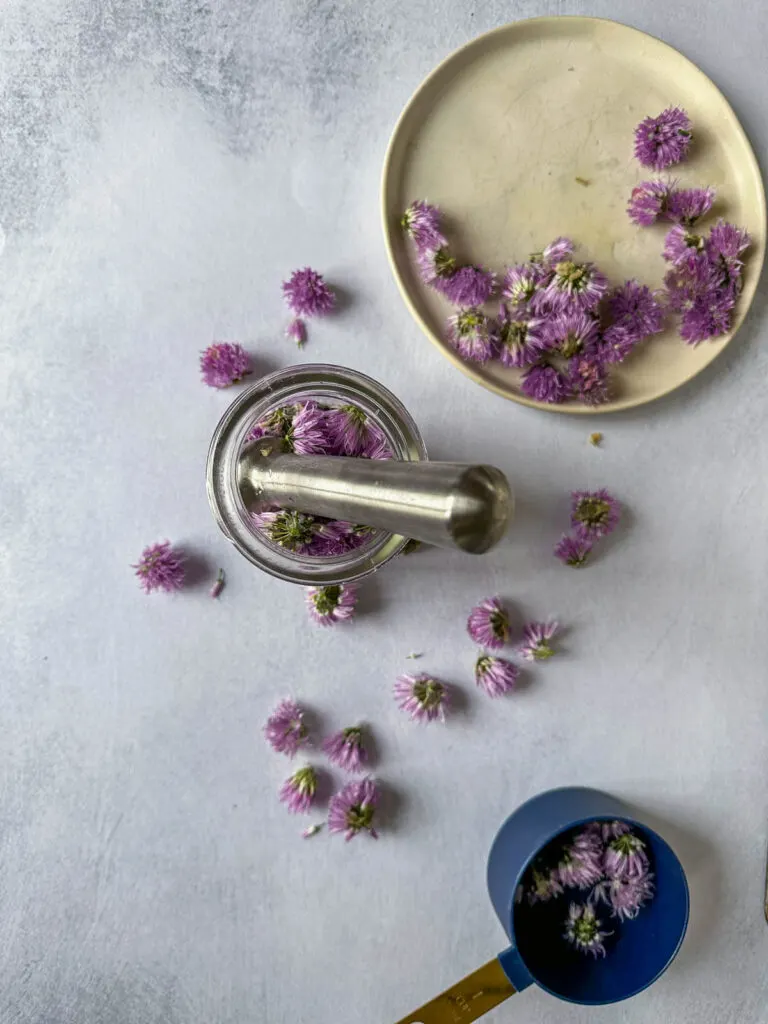
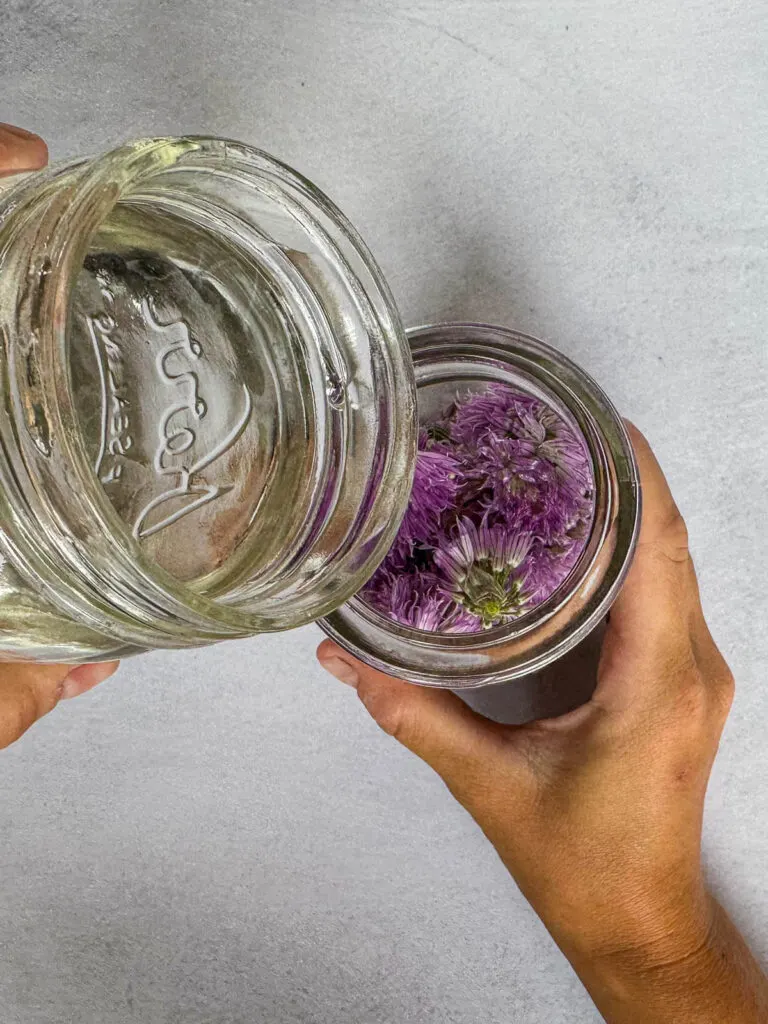
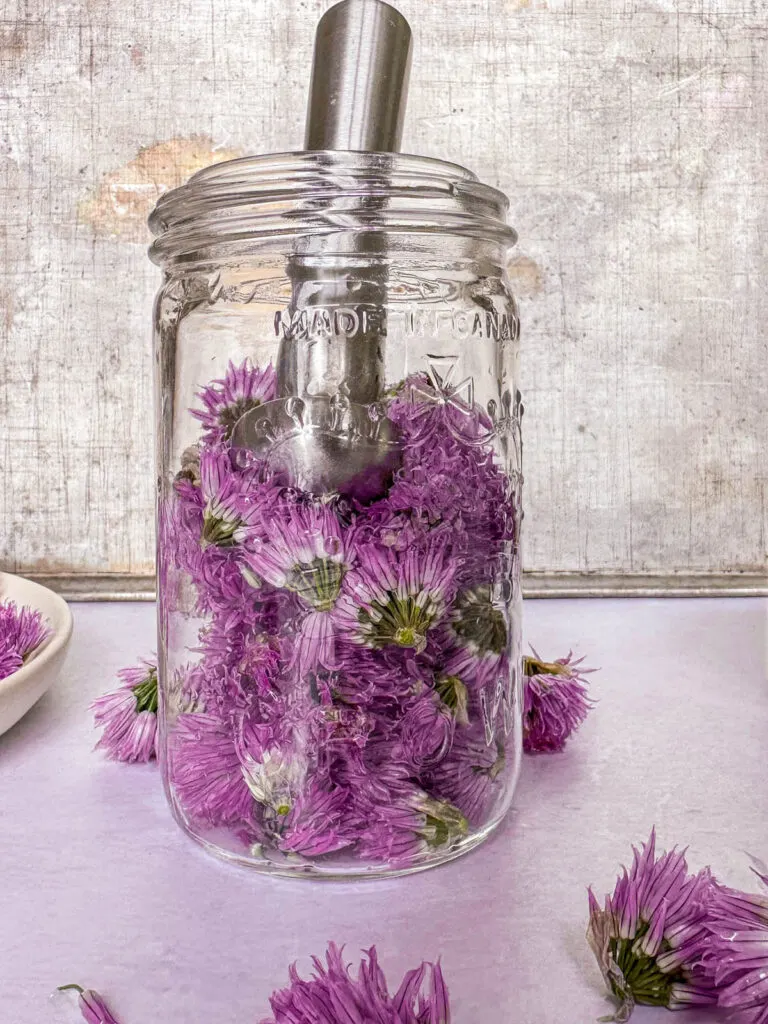
Batch + Storage Information
Batch:
1 1/2 cups of chive blossoms will yield around 1 1/2 cups of infused vinegar. If you'd like to scale the recipe, simply use a 1:1 ratio of chive blossoms to vinegar!
Storage:
Store your chive blossom vinegar in a clean, airtight container, in a cool dark place. This will prevent fading of the beautiful pink-purple hue, and maintain the best flavor. This chive vinegar infusion can be stored for 9-12 months as long as it's in the proper conditions, though the flavor may fade near the end of the 12 months.
How To Use Chive Blossom Vinegar
Think of your vinegar infusion as flavored vinegar, it can be used just like vinegar in most recipes, especially ones that you'd like an extra onion-y kick. And really, who doesn't like extra onion! Try it in these recipes:
- Fermented Mango Habanero Hot Sauce
- Apple Cider Vinaigrette
- Beet and Goat Cheese Salad
- Creamy Cucumber Dill Salad
- Smoked Pork Butt
- Smoked Baked Beans

Notes From The Homestead Kitchen
Chive blossoms are fleeting, but that doesn't mean their flavor has to be! Use this super simple chive blossom vinegar to preserve some of that fresh, spring bounty.
Infusing chive blossoms in vinegar is a wonderful way to enjoy their delicate flavor and vivid color all year round. It's an easy process that requires only minimal effort, but yields flavorful results that can be used in countless recipes. Give it a try today and savor the unique taste of your own homemade chive blossom vinegar.
Easy Chive Blossom Vinegar

A stunning and flavorful infusion crafted from fresh chive blossoms steeped in mild vinegar. This vibrant, pinkish-purple infused vinegar adds a delicate onion-garlic touch to salad dressings, marinades, and sauces, elevating your dishes with its unique taste and eye-catching hue.
Ingredients
- chive blossoms
- 1 1/2 - 2 cups white wine, rice, or champagne vinegar
Instructions
- Collect chive blossoms.
- Soak in a cold water bath, agitating with your fingers to remove dirt, debris, and any small insects. Remove from cold water bath and transfer to a bowl or clean kitchen towel.
- Remove stems and dried bud casings. Discard any obviously wilted, slimy, or otherwise gross flowers.
- Measure 1 1/2 cups of chive blossoms and transfer to a pint sized mason jar.
- Lightly crush the chive blossoms with a pestle or muddler to bruise the flowers and help them release their fragrance.
- Pour vinegar over the blossoms until the jar is full - between 1 1/2 - 2 cups will be required.
- Cover the jar with a non-reactive lid, I used a glass sealer, but a coated canning lid would work too.
- Set aside for 2-3 weeks, or until completely infused. The color of the vinegar will be a vibrant pink.
- Strain vinegar through a fine mesh sieve and transfer to a clean mason jar for long term storage.
Notes
Batch:
1 1/2 cups of chive blossoms will yield around 1 1/2 cups of infused vinegar. If you'd like to scale the recipe, simply use a 1:1 ratio of chive blossoms to vinegar!
Storage:
Store your chive blossom vinegar in a clean, airtight container, in a cool dark place. This will prevent fading of the beautiful pink-purple hue, and maintain the best flavor. This chive vinegar infusion can be stored for 9-12 months as long as it's in the proper conditions, though the flavor may fade near the end of the 12 months.
Nutrition Information:
Yield:
30Serving Size:
1Amount Per Serving: Calories: 26Total Fat: 0gSaturated Fat: 0gTrans Fat: 0gUnsaturated Fat: 0gCholesterol: 0mgSodium: 1mgCarbohydrates: 2gFiber: 0gSugar: 0gProtein: 0g
Pin This Recipe!

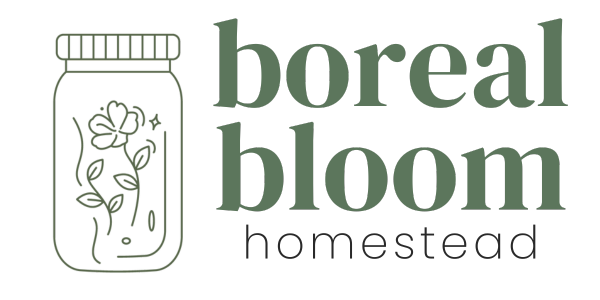
Kate
Monday 19th of June 2023
I can’t wait for my vinegar to finish infusing so that I can make the most delicious vinaigrettes!!